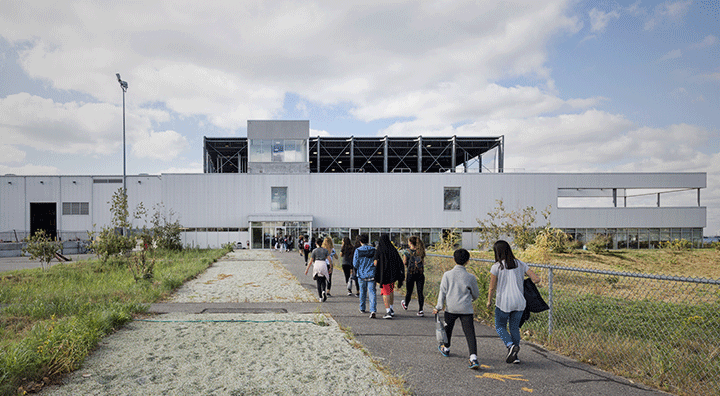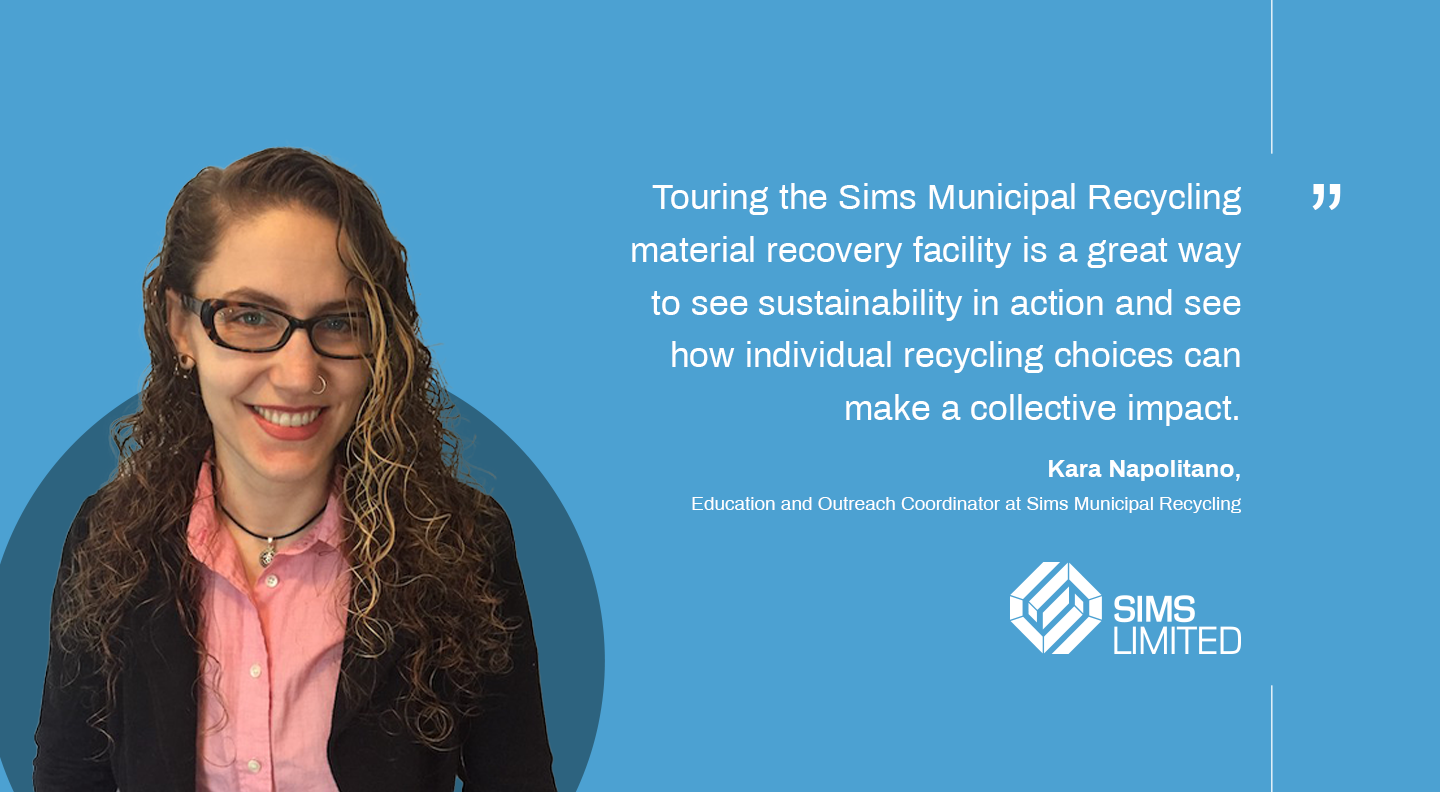Kara Napolitano oversees one of the most in-demand field trips in the greater New York City area – a tour of the Sims Municipal Recycling material recovery facility in Sunset Park, Brooklyn.

Why the popularity? “For one, it’s free,” says Napolitano, the facility’s education and outreach coordinator, with a laugh. In 2019, 8,000 visitors came through the facility’s Recycled Education Centre and tours were booked months in advance.
She also quickly acknowledges that when it comes to immersive educational experiences, it is hard to beat the spectacle of 2.5 miles of conveyor belts and heavy machinery sorting a rainbow of recyclable glass, metal and plastics. Each day, 1,000 tonnes of New York City’s residential recycling is received, sorted and prepared for sale at the facility. Visitors view the state-of-the-art sorting process from an elevated observation deck.
Schoolchildren aren’t the only ones who are targeted by SMR’s Education Centre. Napolitano also hosts adult and college-age groups, inspiring and empowering attendees of all ages to create less waste and recycle right. During her tours, Napolitano fields a variety of questions. From younger elementary students, she is often asked questions such as, “Why don’t we just shoot our trash into space?” She uses these questions as opportunities to turn the discussion to how recycled items are valuable materials that shouldn’t be wasted.
Adults tend to ask questions about the specifics of what can and can’t be recycled, such as: “Can I recycle plastic bottle caps?” The answer: Yes, and keep caps on the bottle, so they don’t fall through the 2.5-inch holes made for sorting shattered glass during processing.
“They worry they aren’t doing it right,” she said. “I encourage them to find the answers.”
Meanwhile, Napolitano finds college-age visitors – many of whom are studying packaging design or are interested in sustainability – are taking a more holistic approach. “They’re not focused on the end of life; they’re focused on the lifecycle,” she said. “They are interested in learning how products can be designed to be more recyclable.”
She has even hosted sustainability directors from companies that produce packaging. “Some had never been to a recycling centre before,” she says.
Visitors can observe sustainable practices even before reaching the doors of the Recycling Education Centre, Napolitano says. On grounds, native plantings help with stormwater management, and the city’s first commercialscale wind turbine generates renewable energy.
“The experience starts as soon as visitors set foot on our grounds,” Napolitano says.
Since COVID-19 hit in March, Napolitano has been forced to shift from in-person to virtual tours. As the pandemic and its restrictions continue, she has noted a steady uptick in demand for these online tours and sees the opportunity to reach new audiences. The virtual tours have not only attracted New York City schools, but also students from Pennsylvania high schools, Maryland colleges and graduate students as far away as China and Abu Dhabi. An important message that she emphasizes during these tours is, “Recycle where you can, but also think about where you can reduce.”
“Recycling is good and it is helpful for creating a circular economy, but recycling alone is not the solution,” Napolitano says. “It is not going to manage all of the mounting waste that is being created. Reducing and reusing are far more impactful. So, I urge people to recycle where they can, but also consider where they can reduce and can make purchases that can be used and reused for longer periods of time. This way, your item doesn’t become waste next week or next year.”
